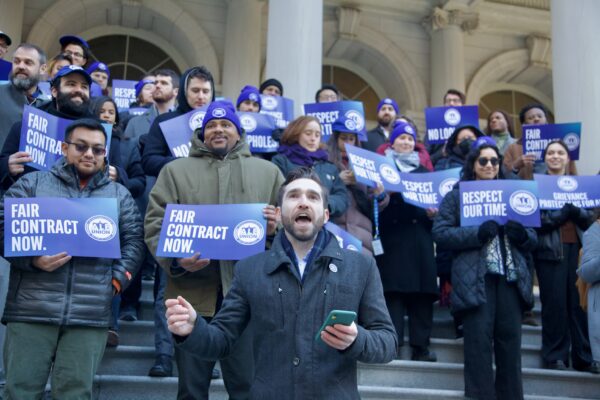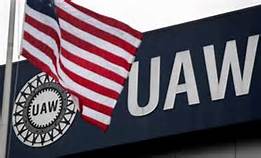By Barbara Kestenbaum

Last November, 200 fast-food workers in New York City went out on strike. It was a bold move! Organized by Fast Food Forward, a coalition of community groups, they demanded $15.00 an hour and the right to unionize without retaliation. On August 29th, bolstered by the outpouring of support by unions including SEIU, other low wage workers, and religious leaders, the strike spread like wildfire across our nation as more than 1,000 restaurants were targeted in over 50 cities, including Atlanta, Boston, Chicago, Milwaukee, Los Angeles, Phoenix, Detroit, Durham, and New Orleans.
The strike, by far the most extensive ever in this industry, brought out thousands of men and women who, up to this  point, seemed to have little or no say about what they were paid or their conditions of work. Here they were, up against a 200-billion-dollar fast-food industry—which includes McDonalds, Burger King, KFC and Taco Bell. The walkout, including mass sit-ins throughout the country, has had a powerful impact—interrupting business for hours and even shutting down some restaurants.
point, seemed to have little or no say about what they were paid or their conditions of work. Here they were, up against a 200-billion-dollar fast-food industry—which includes McDonalds, Burger King, KFC and Taco Bell. The walkout, including mass sit-ins throughout the country, has had a powerful impact—interrupting business for hours and even shutting down some restaurants.
As a retired union member, I was proud to march in downtown Manhattan alongside these enthusiastic and determined striking workers, who were demanding justice as they chanted “We are not dispensable. We know our rights. We want the right to organize.” And “We are the workers, the mighty, mighty workers, who can’t survive on $7.25.”
There were strikers who told me they had not received a raise in years. Some of them are single women raising families; others are senior citizens who have to work at McDonalds and Burger King to supplement their Social Security. It is shameful that while fast-food corporations steadily rack up profits, their workers’ wages are so low that many of them live below the poverty line and need Medicaid and food stamps to survive.
InThe Right of Aesthetic Realism to Be Known, Ellen Reiss, Chairman of Education explains the determination of these workers to fight back:
“[The purpose of] “Fast Food Forward” is to show the very tangible, dollars-and-cents power of the workers over the persons who are robbing them: employers, stockholders. And as soon as people working see that they have power, a great deal can happen.”
Tionnie Cross, who works for McDonalds, showed the power of one worker representing millions when she said to me:
“I do the frying. I clean the floor. I do the register. I make the frappes.” And there was such pride in her voice as she explained, “I am here not just for myself but for all the workers that will follow me.”
I was moved too by T. Williams, 69 years old. It‘s criminal that he, who’s worked for a fast-food restaurant in Brooklyn as a janitor for over 5 years, makes only $7.25 an hour and can’t afford to retire. He said, “I still have to work. I need money to support my family. I’m tired. I want a union.” How different my experience has been because, though we’re the same age, I was in a union and had the good fortune to receive a decent salary, a pension, and healthcare benefits so I could retire with dignity.
It was Eli Siegel, the founder of Aesthetic Realism, who explained the basis of the profit system as contempt: the seeing of one’s fellow human beings solely in terms of how much labor can be gotten from them, while paying them as little as possible. This contempt has made for historical horrors that still occur today: child labor, unsafe working conditions, poverty for life, and much more.
Ms. Reiss explains the brutal mindset behind the exploitation of workers like Mr. Williams:
“In the profit system an employer thinks this way: “How little can I get away with paying you and spending on your working conditions, and how much labor can I squeeze from you? I’m not interested in your feelings, who you really are, what you deserve: that would stop me from aggrandizing myself through you. It would interfere with using you for profit!”
And to those who cynically question if we are willing to pay more for a hamburger so these workers can get a fair wage, I am proud to agree with Ms. Reiss:
The real question is: who should receive the money brought in by a fast-food restaurant (or other business)—the people who have worked for that income, with their hours of mental and physical labor; or some stockholders who didn’t do the work? The answer is, of course: the first.



